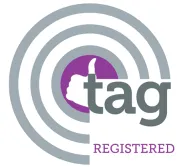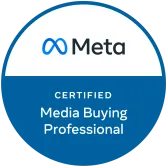
In today's digital-first world, your business's online reputation can make or break your success. With consumers increasingly relying on the internet to inform their purchasing decisions, managing how your brand is perceived online is no longer optional - it's essential. According to recent data, 93% of consumers say online reviews influence their shopping choices, and a staggering 95% of customers share negative experiences with others, both online and offline. Meanwhile, only 47% proactively share positive ones without prompting. These statistics highlight the asymmetry in feedback: bad news spreads fast, while good news often needs a nudge.
But here's the good news: you can take control. Online reputation management (ORM) involves monitoring, influencing, and shaping public perception of your brand across search engines, social media, review sites, and more. It's a proactive strategy that combines customer service, marketing, public relations, and SEO to build trust, mitigate risks, and drive growth. In this updated guide, we'll explore why ORM matters more than ever in 2025, share key statistics, and provide a comprehensive set of best practices to help you master it. Whether you're a small local business or a growing enterprise, these steps will empower you to turn your online presence into a powerful asset.
Why Online Reputation Management Matters in 2025
The digital landscape has evolved dramatically since the mid-2010s. Back then, social media was just gaining traction for businesses, but now platforms like Facebook, X (formerly Twitter), Instagram, LinkedIn, and TikTok are where conversations about your brand happen in real-time. Add in review sites like Google, Yelp, and Trustpilot, and it's clear that your reputation is constantly being shaped by user-generated content.
Key reasons to prioritize ORM:
Consumer Research Habits: 82% of consumers are convinced to make a purchase based on online reviews. Moreover, 72% are willing to pay more for a premium experience from a company with a strong reputation.
The Impact of Negativity: 53% of customers expect a response to negative reviews within one week. Unaddressed complaints can lead to PR nightmares, as seen in high-profile cases like viral social media incidents that have cost brands millions in lost value.
SEO and Visibility: Reviews and positive content boost your search rankings. For instance, top-ranked Google local listings average 38 reviews, compared to just 14 for lower-ranked ones. Google My Business and review signals remain top local search factors.
Regulatory Changes: In 2024, the FTC banned fake reviews and AI-generated testimonials, emphasizing authenticity. Violating these rules can result in penalties, making honest ORM practices crucial.
Trends in 2025: With AI-powered tools for sentiment analysis becoming mainstream, businesses can now detect issues early. User-generated content is the new word-of-mouth, and skepticism toward paid ads has made third-party endorsements (like reviews) more trusted than ever.
Ignoring your online reputation isn't an option - 95% of young consumers (ages 18-34) read reviews before trusting a business, and 57% only buy from those with four or more stars. A strong ORM strategy not only protects against damage but also amplifies positives, leading to increased sales, loyalty, and referrals.
12 Best Practices for Managing Your Business's Online Reputation
Drawing from leading experts and current trends, here are 12 essential best practices to build a robust ORM strategy. These expand on basic tips like encouraging reviews and responding to feedback, incorporating modern tools, psychology, and proactive measures.
1. Monitor Your Social Footprint Regularly
Start by knowing what's being said about you. Perform regular searches for your business name, products, and key terms on Google, social platforms, and review sites. Set up free alerts via Google Alerts to get email notifications for new mentions.
Tip: Use AI-powered tools like Brandwatch, Meltwater, or Sprout Social for advanced sentiment analysis - they scan conversations, detect trends, and flag crises in real-time. For small businesses, free options like Google Alerts suffice initially.
2. Claim and Optimize Your Profiles
Ensure your business is listed accurately on major platforms. Claim your Google My Business (now Google Business Profile), Yelp, Facebook, and other relevant sites. Update contact info, add photos, and use keyword-rich descriptions to improve SEO.
Statistic: Optimized profiles with recent reviews rank higher - 40% of consumers only consider reviews from the past two weeks.
3. Respond Promptly and Authentically to All Feedback
Reply to every review, positive or negative, within 24-48 hours. Thank positive reviewers to encourage more, and address negatives with empathy: apologize, offer solutions, and invite offline discussions (e.g., "We're sorry for your experience - please DM us to make it right").
Best Practice: Avoid defensiveness; 39% of negative reviewers just want an apology. Use templated responses for consistency, but personalize them. This shows you value customers and can turn detractors into advocates.
4. Actively Solicit Honest Reviews
Don't wait for feedback - ask for it. After a positive interaction, send email campaigns or texts encouraging customers to review on Google or Yelp. Offer incentives like discounts for participation (not for positive ratings) to comply with FTC rules.
Statistic: 70% of customers will leave a review if asked. Tools like Podium or Grade.us automate review requests and aggregate feedback.
5. Highlight and Amplify Positive Content
Share glowing reviews on your social media, website, and marketing materials (with permission). Create testimonials, infographics, or user-generated content campaigns to spread positivity.
Tip: Post links to positive reviews from sites like TripAdvisor or Trustpilot on X or Instagram to build social proof.
6. Encourage Brand Advocacy and Influencer Partnerships
Turn happy customers and employees into advocates. Allow staff to share company content (with guidelines), and partner with micro-influencers for authentic endorsements. Tools like BuzzSumo help identify relevant influencers.
Trend: In 2025, employee advocacy programs boost credibility, as people trust peers over ads.
7. Create and Promote Positive Original Content
Proactively produce blogs, videos, podcasts, or opinion pieces to dominate search results and push down negatives. Focus on value-driven content that addresses customer pain points.
Best Practice: Use SEO to ensure your content ranks high - earned media like guest articles can enhance authority.
8. Be Transparent and Authentic
Admit mistakes publicly, share behind-the-scenes stories, and engage in honest dialogues. Host social media contests or Q&A sessions to build community.
Psychology Insight: Consumers seek authenticity; transparent brands foster trust and loyalty in an era of skepticism.
9. Know Your Audience and Choose the Right Platforms
Research your target demographics to focus efforts where they are (e.g., TikTok for Gen Z, LinkedIn for B2B). Tailor content accordingly.
Tool: Analytics from Hootsuite or Sprout Social help track audience behavior.
10. Set Measurable Goals and Track Progress
Define KPIs like review volume, average rating, response time, or positive mention growth. Use reporting tools to measure ROI and adjust strategies.
Example Goals: Increase positive reviews by 20% quarterly or reduce negative sentiment by 15%.
11. Leverage Tools for Efficiency
Invest in ORM software to streamline efforts. Top options for 2025 include:
Sprout Social: For social listening, review management, and AI sentiment analysis.
Birdeye or ReviewTrackers: AI-driven review aggregation and response.
Brand24 or Mention: Keyword tracking across web and social.
Yext: For managing listings in directories.
Free starters: Google Alerts, Trustpilot.
Choose based on your size - small businesses might start with Broadly, while enterprises need scalable options like Qualtrics.
12. Prepare for Crises and Stay Proactive
Develop a crisis plan: monitor for spikes in negative mentions, respond swiftly, and learn from incidents. Regularly audit your reputation to stay ahead.
Trend: With AI, proactive detection prevents small issues from going viral.
The Core Pillars of Your ORM Strategy
To tie it all together, build on these four pillars:
Monitoring: Continuous tracking of mentions and sentiment.
Engagement: Timely, authentic interactions.
Content Creation: Positive, SEO-optimized materials.
Analysis and Adaptation: Data-driven refinements for ongoing improvement.
Take Charge of Your Digital Narrative
In 2025, your online reputation is your most valuable asset - protect it, nurture it, and watch your business thrive. By implementing these best practices, you'll not only mitigate risks but also build a resilient brand that attracts loyal customers and stands out in a crowded market. Remember, ORM is an ongoing commitment, not a one-time fix.
Ready to elevate your online presence? Contact CMG Local Solutions today for expert digital marketing support, including reputation management services. Our partners, like Google Ads and top industry leaders, ensure credible, data-driven results. Let's turn your reputation into revenue.







